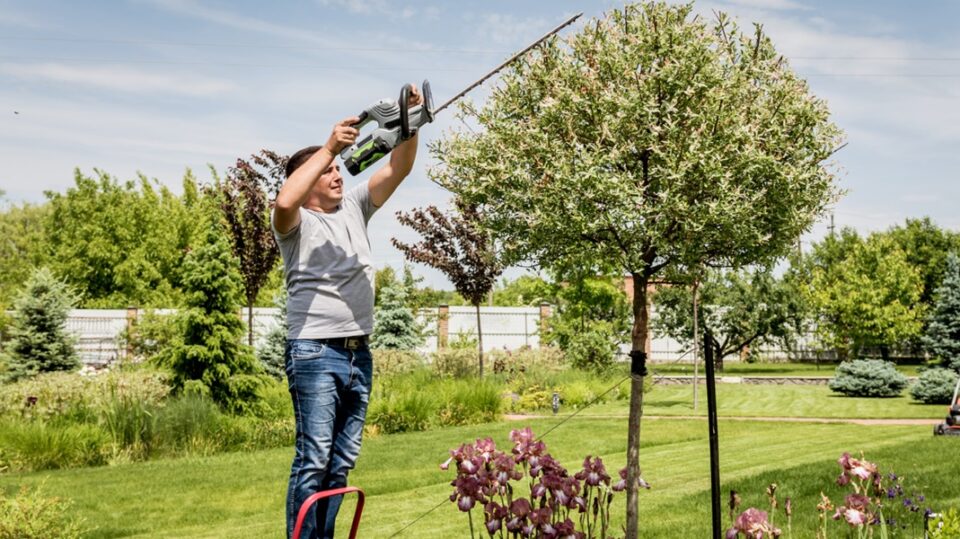Tree trimming is an essential part of maintaining healthy and aesthetically pleasing landscapes. However, many property owners make mistakes that can harm their trees. For those considering tree trimming in Canton, GA, it’s crucial to understand these common errors and how to avoid them. This article outlines typical mistakes made during tree trimming and offers guidance on proper practices to ensure your trees thrive.
Over-Trimming: The Risk of Doing Too Much
Understanding the Impact
One of the most frequent mistakes is over-trimming, which can severely stress a tree. Removing too much foliage diminishes the tree’s ability to photosynthesize, leading to reduced energy reserves and increased vulnerability to pests and diseases. Maintaining a balance is essential; only remove what is necessary to promote the tree’s health and structure.
Avoiding Over-Trimming
To prevent over-trimming, it’s important to understand the specific needs of each tree species. Consulting with professionals who can provide essential trimming tips ensures that the trimming process supports, rather than hinders, tree growth.
Timing Is Everything: Trimming at the Wrong Time
Seasonal Considerations
Trimming trees at the wrong time of year can stunt growth or make trees susceptible to disease. For most trees, the dormant season—late winter or early spring—is the best time for trimming. This timing helps minimize stress and encourages a vigorous start to the growing season.
Professional Insight
Consulting with tree care experts can help determine the optimal time for trimming specific trees on your property. Their expertise can ensure that your trees receive the care they need when they need it most.
Tool Troubles: The Importance of Proper Equipment
Using the Right Tools
Improper tools can cause significant damage to trees, leaving them open to infections and pest infestations. Dull or inappropriate tools can tear bark and damage branches, leading to long-term harm.
Keeping Tools Sharp
Ensuring that tools are sharp and suitable for the task is crucial. Investing in quality equipment or hiring professionals who use the latest tools can make a significant difference in the health and appearance of your trees.
Ignoring Tree Health: Signs That Shouldn’t Be Overlooked
Recognizing the Signs
Ignoring the health of your trees can lead to severe problems. Discolored leaves, unusual branch dieback, or visible pests are all signs that a tree may be in distress.
Taking Action
Addressing these signs early can prevent further damage. Regular inspections and prompt intervention can keep trees healthy and prevent small issues from becoming major problems.
The DIY Dilemma: When to Call in the Pros
Understanding the Benefits
While it may be tempting to handle tree trimming yourself, a lack of expertise can lead to poor outcomes. Hiring professionals can offer numerous benefits of professional tree trimming, including enhanced tree health and aesthetics.
Getting a Professional Proposal
When hiring tree services, it’s important to request a detailed proposal. This ensures clarity regarding the tasks to be performed and the expected results, helping to avoid misunderstandings and ensure satisfaction.
Conclusion
Avoiding common mistakes in tree trimming requires knowledge, the right tools, and sometimes professional assistance. By understanding the needs of your trees and following best practices, you can maintain their health and beauty for years to come. Whether through DIY efforts or professional services, proper tree care is an investment in the future of your landscape.
Frequently Asked Questions
1. How often should trees be trimmed?
Most trees benefit from being trimmed every three to five years, depending on their species and growth rate. Regular inspections can help determine the best schedule for your specific trees.
2. What are the signs that a tree needs trimming?
Signs include dead or broken branches, crowded limbs, and branches growing too close to structures. Regular assessments can help identify when trimming is needed.
3. Why should I hire professional tree trimmers?
Professionals have the expertise and equipment to ensure proper trimming, enhancing the health and appearance of your trees while minimizing risks of damage.

